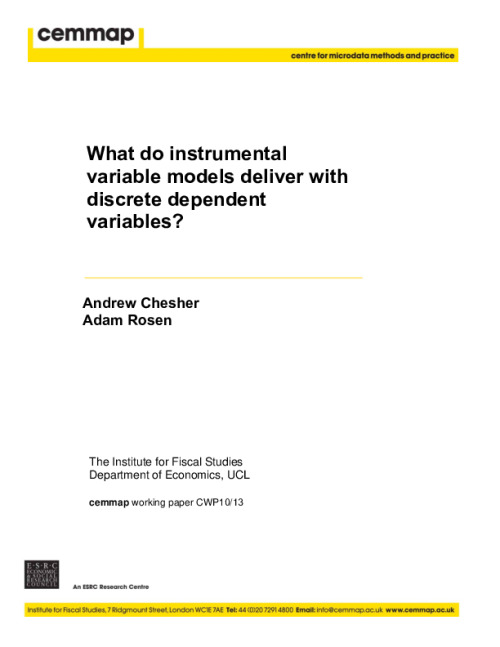We study models with discrete endogenous variables and compare the use of two stage least squares (2SLS) in a linear probability model with bounds analysis using a nonparametric instrumental variable model.
2SLS has the advantage of providing an easy to compute point estimator of a slope coefficient which can be interpreted as a local average treatment effect (LATE). However, the 2SLS estimator does not measure the value of other useful treatment effect parameters without invoking untenable restrictions.
The nonparametric instrumental variable (IV) model has the advantage of being weakly restrictive, so more generally applicable, but it usually delivers set identification. Nonetheless it can be used to consistently estimate bounds on many parameters of interest including, for example, average treatment effects. We illustrate using data from Angrist & Evans (1998) and study the effect of family size on female employment.
This October 2015 version corrects an error in the paper, as explained in footnote 1. The original version of the working paper is available here.











